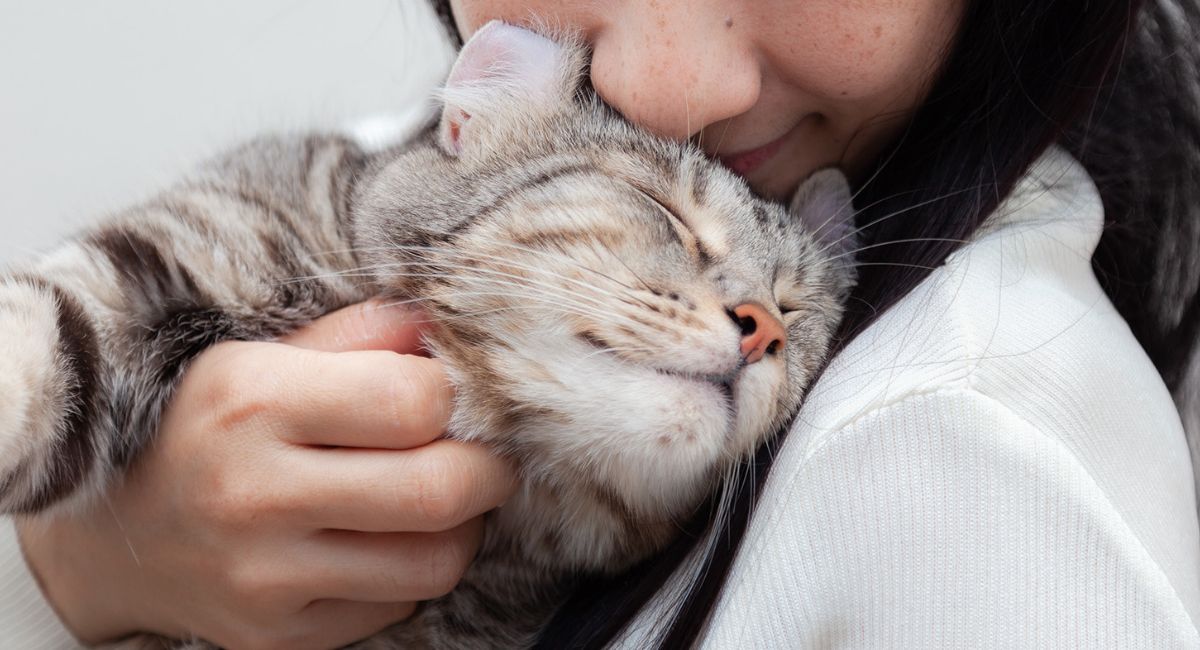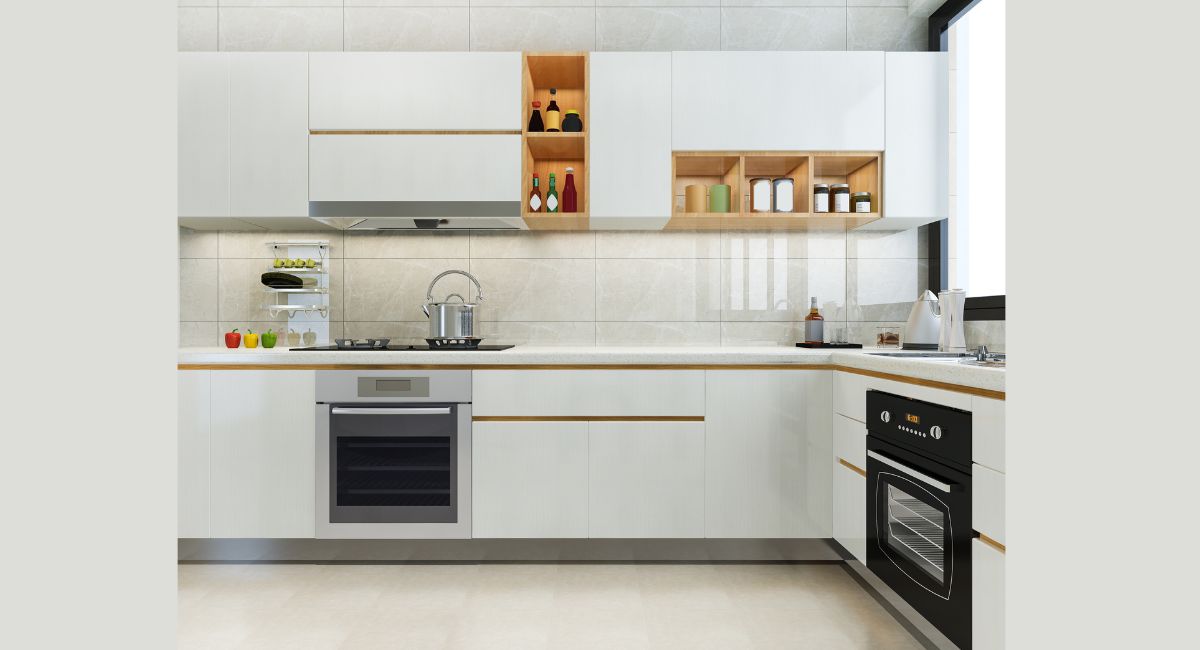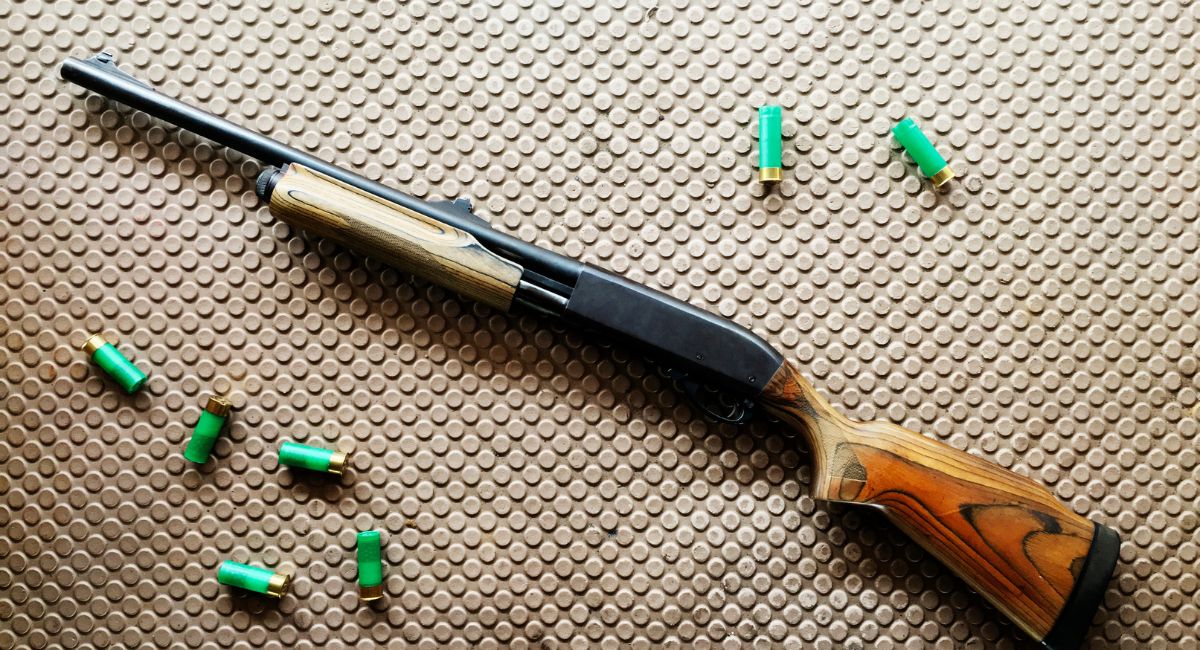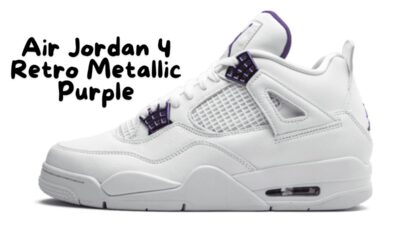HOME
Honoring Your Pet: The Importance of Memorial Services

Introduction
The profound bond between humans and their pets transcends words and is filled with unconditional love and loyalty, which become an integral part of a person’s life. The loss can be deeply felt when a pet passes away, akin to losing a family member. As part of the grieving process, honoring beloved companions through memorial services has gained popularity. These ceremonies pay tribute to the pet’s life and aid in the emotional healing of those left behind. By understanding the importance and impact of these memorial services, pet owners are better equipped to navigate through their grief and celebrate the lives of their cherished friends.
The Role of Memorial Services
Pet memorial services can offer a structured opportunity for grieving pet owners to say goodbye meaningfully. These pet memorial services San Francisco CA play a critical role in grieving, providing a space for reflection, expression, and closure. By gathering friends and family, these ceremonies offer a communal aspect that fosters shared mourning and common remembrance. Participants are encouraged to speak or reflect on the memories shared with their pet, helping to reinforce the value and significance of the human-animal bond. In celebrating a pet’s life, these services highlight the joy and love brought into a household, ensuring that their memory leaves a lasting impact.
Types of Memorial Services
Memorializing a pet can take various forms, customized to align with individual preferences and cultural practices. Traditional memorial services resemble those held for humans, involving eulogies, music, and shared stories. Alternatively, some pet owners may prefer a more informal gathering, such as a garden ceremony or a beachside memorial, where the pet’s ashes might be scattered. Other options include virtual services, which have become increasingly prevalent, allowing far-flung friends and family to participate in the memorial. The pet’s personality often guides the choice of service—and what the owner feels would best celebrate their life.
Personalizing the Memorial
A personal touch can make a pet memorial service even more meaningful, transforming the ceremony into a true celebration of life. Personalization begins with selecting a location that holds significance for the pet—a favorite park, garden, or even a cozy corner at home where they love to relax. Incorporating mementos like collars, toys, or favorite treats can visualize the bond shared. Including video tributes or photo slideshows further enhances the connection, allowing attendees to witness the pet’s journey through life. These personalized elements create a vivid narrative, allowing attendees to reflect on shared experiences and cherished moments.
Emotional Support and Closure
Grieving for a pet can be a solitary experience, as not everyone understands the depth of pain felt by the loss. Memorial services lend emotional support by validating the owner’s grief and providing an acknowledged platform for expressing sorrow and gratitude. They allow pet owners to honor their pets publicly, articulating their significance. These ceremonies serve as a transition, marking the end of a chapter yet enabling the owner to carry forward cherished memories. This bridge between mourning and acceptance is essential for emotional healing, helping to alleviate the intense feelings of grief and loss.
Community and Shared Experiences
The communal aspect of a memorial service fosters a network of support among attendees. Often, fellow pet owners share similar experiences of love and loss, creating a unique bond through shared understanding. This community can offer solace, empathy, and shared stories that resonate, reminding bereaved individuals that they are not alone in their sorrow. Many memorial services also incorporate community-building elements, such as planting a memorial garden or dedicating a public space to the pet’s memory. Such collective remembrance creates lasting ties, offering comfort and support during the grieving process. They encapsulate the enduring impact of pets on both individual lives and the broader community.
Introduction to Healing Rituals
Rituals are powerful tools for healing and processing grief, providing a framework for individuals to express emotions and find solace. These can include candle-lighting ceremonies, where each flame represents a memory or attribute of the pet. Planting trees or flowers in a pet’s honor can symbolize new life and growth as permanent reminders of the bond shared. Releasing balloons or butterflies during the ceremony can embody the release of grief, symbolizing the pet’s spirit moving on to a peaceful place. These ritual acts enhance the healing process, offering visible expressions of love and remembrance.
Conclusion
The importance of memorial services for pets lies in their ability to commemorate the life and legacy of cherished companions, providing closure and celebration. These services highlight pets’ pivotal role in enriching lives, allowing owners to navigate the grieving process with dignity and support. Memorializing a pet acknowledges its significance, reinforcing the love and joy they’ve brought into existence. By embracing these ceremonies, pet owners find solace in shared memories, community support, and the enduring impact of their beloved pets. As such, pet memorial services become vital in transforming grief into a heartfelt tribute, carrying forward the legacy of love in a pet’s memory.
HOME
How Mobile Carts Are Revolutionizing Workplaces

Introduction
Mobile carts are revolutionizing various industries, including healthcare, logistics, and manufacturing, by providing immediate access to tools, technology, and essential supplies. These versatile units make workflows more agile and efficient, allowing teams to respond quickly to shifting priorities and unexpected challenges. The use of durable wheels, like the phenolic wheel, ensures smooth and reliable movement across various surfaces and supports heavy loads without compromising mobility. This robust design allows carts to be maneuvered safely even in obstacle-rich environments. Customizing mobile carts for specific operational needs is crucial as modern workplaces demand speed, safety, and adaptability. High-quality components like the resilient phenolic wheel help companies minimize downtime, reduce physical strain, and facilitate seamless integration with new technologies. Mobile carts are essential for supporting fluid and responsive workplace strategies, and the trend is expected to continue as organizations recognize their flexibility and performance benefits.
Boosting Operational Efficiency
Mobile carts have revolutionized various industries by providing mission-critical technology such as computers, label printers, and barcode scanners. These carts allow employees to process inventory, print documents, and update records without leaving their work area, saving time and reducing operational fatigue. Research shows a 20% increase in operational efficiency in logistics settings that deploy mobile computer carts, resulting in happier, less fatigued staff. Customization of carts for specific tasks enhances efficiency, transforming them into mobile workstations that can adapt to dynamic job demands. Mobile carts also improve workplace safety by minimizing manual handling and reducing the risk of repetitive strain injuries and accidents. They also reduce clutter and prevent workplace accidents, especially in healthcare and manufacturing settings. Mobile carts serve as both productivity tools and an essential part of company-wide risk management strategies.
Customization and Technological Integration
Modern mobile carts are more than simple storage units; they offer customization options for unique operational workflows, including modular shelving, locking drawers, adjustable work surfaces, mounted screens, and integrated power sources. Advanced features like IoT sensors, RFID tracking, onboard computers, and wireless networking transform standard carts into sophisticated mobile data hubs, providing real-time inventory, workflow, and maintenance data. These innovations enhance operational accuracy and support data-driven decision-making in fast-paced work environments. Mobile carts are also upgradable, allowing businesses to retrofit or upgrade their fleet as operational needs change, supporting long-term cost savings and competitiveness in rapidly evolving markets.
Real-World Applications
Mobile carts are widely used across various industries, including healthcare, manufacturing, assembly lines, and technical workshops. They support vital activities like electronic health records management, medication dispensing, and telemedicine, enhancing care quality and efficiency. In manufacturing, they serve as roving workbenches with specialized tools, reducing downtime and optimizing workspace layout. Offices and educational institutions are also embracing mobile carts for portable IT support, remote conferencing stations, and mobile print centers. In collaborative environments, mobile carts facilitate teamwork and rapid project execution in hybrid or flexible work setups.
Future Trends in Mobile Cart Solutions
The future of mobile carts is influenced by innovation, automation, and sustainability. Autonomous navigation, powered by artificial intelligence and sensor technology, allows carts to move safely in busy work environments, freeing up workers for higher-level tasks. Manufacturers are also focusing on energy-efficient features like renewable energy charging and advanced battery technology. They are also using lightweight, recyclable materials to reduce their carbon footprint. As workplace flexibility, employee safety, and environmental stewardship become more important, mobile cart solutions will continue to evolve and support productivity in innovative ways.
HOME
Creative Kitchen Cabinet Storage Solutions

Kitchen space is a crucial aspect of a home, and it’s essential to create a streamlined, efficient, and welcoming space that meets your needs. To achieve this, rethink how you use cabinets and implement storage hacks that maximize utility and aesthetics. Today’s cabinets come in a range of designs, finishes, and interior innovations, designed to prioritize organization and flexibility without sacrificing style. These modern storage solutions not only keep your kitchen clutter-free but also change the way you cook, prep, and entertain guests. Whether you’re updating an outdated kitchen or planning a new build, explore this comprehensive guide to creative cabinet storage solutions to inspire you to reimagine your kitchen space as a model of efficiency, beauty, and convenience.
Maximizing Vertical Space
Tall cabinets and ceiling-mounted racks are effective solutions for maximizing vertical storage in kitchens. Tall cabinets extend all the way to the ceiling, providing ample storage for less frequently used items, such as specialty baking dishes and large serving platters. This keeps daily items more accessible and reduces clutter on countertops. Ceiling-mounted racks hang heavy pans, skillets, or utensils above a kitchen island or food prep area, keeping essentials at your fingertips and adding a touch of culinary flair. Open shelves above doorways or windows display cookware, cookbooks, or plants, freeing up prime cabinet and counter space for everyday necessities. Both methods help maximize vertical real estate in kitchens, especially in older homes or city apartments.
Pull-Out and Roll-Out Solutions
Upgrade to pull-out and roll-out features in cabinet interiors to improve organization and accessibility. These features turn dark shelves into easily accessible storage spaces, making inventory checks and organization easier. Pull-out pantries make it easy to see and reach every can, box, or snack, eliminating the need to forget about ingredients. Roll-out trays or shelves can store and access even the bulkiest cookware with minimal effort, making it easier to find and use. For frequently used smaller items, consider narrow pull-out racks for spices, condiments, or cleaning products. These features keep everything sharply organized and eliminate the risk of lost or forgotten supplies. For more organizing ideas, check out HGTV’s detailed resource.
Multi-Functional Cabinets
The smartest modern kitchen cabinets do far more than simply store dishes—they anticipate your needs with an array of built-in organizers and customizable features. Dedicated utensil dividers separate flatware, knives, and tools so you never fumble through a jumbled drawer again. Adjustable shelves provide the flexibility to reconfigure your cabinet interiors as your storage needs change, ensuring a future-proof, organized kitchen. Specialized racks for baking trays, pan lids, and cutting boards keep everything in its place and easy to find. You can even add a sliding or fold-away cutting board beneath your countertops, providing extra prep space in seconds—slide it out when needed and tuck it away when done.
Another clever innovation is the hidden drawer, sometimes nestled within a larger drawer to provide stealthy extra storage for linens, wraps, or shallow pans. Hidden features, such as built-in trash pullouts and recycling centers, also enhance efficiency and help maintain a clutter-free look. These creative solutions have a significant impact on day-to-day kitchen life by streamlining every task and keeping the space orderly.
Innovative Corner Solutions
For decades, corner cabinets in the kitchen earned a reputation as wasted or frustratingly inaccessible areas. Thankfully, today’s specialized corner storage solutions have revolutionized the way we use these tricky spaces. The classic lazy Susan, a rotating circular shelf, allows you to spin items, such as pots, small appliances, or pantry staples, from the back of the cabinet to the front with ease. No more awkward crawling or reaching—all of your items are easily within reach with a quick turn.
For even greater accessibility, consider installing swing-out trays and multi-tiered shelves that glide outward when the cabinet door is opened. These mechanisms extend the entire storage platform right into your reach, maximizing every square inch. By investing in these smart corner solutions, you ensure that nothing gets lost or forgotten, and every pot, lid, or gadget remains accessible. Thoughtful corner storage can turn previously awkward spaces into some of the most practical and valuable areas in your kitchen.
Appliance Lifts and Garages
Countertop appliances such as mixers, blenders, and coffee makers play a vital role in modern kitchens, but it’s easy for them to overwhelm your limited prep space if not managed carefully. Appliance lifts, installed within base cabinets, enable you to effortlessly bring heavy appliances to counter height for use and then lower them away when finished. This mechanism not only saves back strain but also means you can keep your countertop free for food prep, baking, or serving without sacrificing easy access to your favorite gadgets.
Appliance garages take the concept a step further by providing dedicated cabinet compartments, often with a roll-top or sliding door, where small appliances can be stored out of sight but remain plugged in and ready to use. Just open the garage door when you need your coffee maker or toaster, and close it to maintain a seamless, uncluttered look. These smart solutions make keeping your kitchen tidy incredibly easy, especially during busy mornings or when entertaining. Together, appliance lifts and garages blend form with function, ensuring that powerful kitchen tools enhance rather than hinder your day-to-day life.
Conclusion
Innovative kitchen cabinet storage solutions are about more than just creating a beautiful space—they contribute to a kitchen that works in harmony with your daily routines and supports your unique lifestyle. By planning intentionally, taking full advantage of vertical space, integrating flexible cabinet features, and embracing specialized solutions for corners and countertops, you can enjoy a more efficient, organized, and welcoming kitchen. Whether you’re prepping for a family meal or entertaining a crowd, creative storage is the secret to a clutter-free environment. Explore your options and see how your cabinets can become the ultimate asset in bringing order, style, and joy to your home.
HOME
Key Considerations When Choosing a Modern Bolt-Action Rifle

Balancing Accuracy and Reliability
For anyone in the market for a new bolt-action rifle, accuracy and reliability are commonly the two most important factors. Shooters and hunters alike require a firearm that does more than perform on paper; they need something that can face the realities of unpredictable outdoor conditions. Modern models, including popular options like Tikka rifles United States, show how manufacturers continuously refine their designs to deliver performance that isn’t compromised by clunky actions or frequent misfires. Reliability in the field supports a shooter’s confidence, knowing the rifle will function flawlessly when it matters most, whether taking a distant shot at a trophy animal or participating in a precision match.
Rifle makers are focusing on innovations like improved bedding systems, corrosion-resistant coatings, and finely tuned trigger mechanisms to ensure rifles are accurate at range and reliable across varying climates and terrains. Long-term users value rifles that resist jamming and maintain zero over several seasons. Outdoor Life’s reviews on bolt-action rifles highlight that many highly rated rifles offer superb accuracy and robust construction that stands up to heavy use and adverse weather, a true partnership between engineering and real-world knowledge.
Material Matters
Bolt-action rifles are built with various materials, affecting their performance and longevity. For those in harsh environments, stainless steel barrels and receivers are recommended due to their resistance to rust and corrosion. Classic carbon-steel actions are preferred for their traditional feel and lower price point, but require careful maintenance. Modern rifles now use synthetic materials like fiberglass-reinforced polymer and carbon-fiber stocks, which reduce weight and stabilize performance by resisting expansion and contraction during temperature swings. These composites significantly advance strength-to-weight ratio and durability, ensuring a rifle can handle years of use without warping, chipping, or losing shape. This is particularly beneficial for outdoor enthusiasts and those who want a gun that doesn’t require frequent maintenance after each outing.
Stock Design and Ergonomics
The ergonomics of a rifle stock significantly impact comfort and performance. Modern rifles now feature adjustable cheek rests and length-of-pull spacers, allowing users to customize the fit to their body size and preferred shooting position. These features enhance comfort and improve accuracy by ensuring consistent head alignment and increasing control over recoil. Modern rifles also incorporate ambidextrous safety levers, magazine releases, and textured grips for a confident hold even in wet conditions. A well-fitted stock reduces shooter fatigue and improves natural point of aim, especially on longer outings. The evolution of ease of use has also adapted to left-handed shooters and unique grip styles or eye relief preferences. A comfortable and adjustable stock can significantly enhance accuracy and follow-up speed, making each trip to the range more productive and enjoyable.
Barrel Length and Performance
The length of a rifle barrel is more than just a measurement—it fundamentally changes how the firearm handles and shoots. Longer barrels generally offer higher velocities by allowing powder to burn more completely, which can flatten trajectories and increase down-range energy. However, this comes at the cost of extra weight and bulk, a tradeoff often less desirable for hunters navigating brush or thick cover.
- Short barrels (16–20 inches): Lightweight, easy to maneuver through wooded areas, and better suited for shooters who value portability. The downside is modestly decreased bullet speeds and slightly more muzzle blast.
- Standard barrels (22–24 inches): Striking a balance between velocity and practicality, these barrels are a favorite among hunters and competitive shooters aiming for versatility.
- Long barrels (26 inches and up): Deliver the highest potential bullet velocities and can wring out greater accuracy at extreme ranges, but usually feel less handy, especially in dense timber or while stalking game on foot.
Ultimately, your intended environment determines your best choice. Mountain hunters regularly prioritize compact rifles when covering steep terrain, while those focused on open country or long-range targets may accept more weight for the advantage in ballistic performance.
Caliber Selection
Selecting the correct caliber is essential for both new and experienced shooters. Personal use, regional game species, and ammunition availability all factor into this choice. Classic hunting calibers like .308 Winchester, 6.5 Creedmoor, and .30-06 Springfield are perennial favorites, offering a blend of manageability, range, and stopping power that suits a variety of hunts around the world.
For those who prefer lighter recoil or shoot at shorter distances, options such as .223 Remington are gaining popularity, especially for small game or target practice. Conversely, specialized long-range cartridges—like 6.5 PRC or .300 Winchester Magnum—cater to shooters pushing their limits at distances up to 1,000 yards and beyond. Factors such as ammunition cost, local supply, and barrel life should also be considered. Range sessions with various calibers can help new shooters discover what feels right for their skill level and what best meets their hunting or sport shooting requirements.
Scope Compatibility and Optics
Long-range accuracy in rifles relies on compatibility with modern optics. New bolt-action models have factory-drilled and tapped receivers, allowing shooters to mount robust scope bases, rings, and modern red dot or telescopic scopes. Quality mounting hardware is crucial, as weak mounts or improperly aligned rings can significantly reduce the rifle’s and optic’s value. Optics should have sufficient eye relief, rugged construction, and weatherproofing for real-world use. Features like illuminated reticles or first focal plane layouts allow changing light and target sizes. When setting up the rifle, ensure the cheek weld feels natural, the exit pupil is comfortable, and the eye remains protected from recoil. Consulting range staff or local gunsmiths can provide practical advice on optic installation.
Maintenance and Longevity
A well-maintained bolt-action rifle is a dependable one. Regular cleaning routines—especially after rain, snow, or mud exposure—significantly increase a firearm’s reliability and service life. Stainless finishes and sealed stocks can help, but nothing replaces regular attention to the bore, bolt, and trigger group.
- Always wipe down your rifle with a corrosion-inhibiting oil after use in inclement conditions.
- Utilize chamber and bore brushes specific to your caliber to remove fouling after range sessions.
- Check moving parts for grit and reapply proper lubricants to maintain smooth cycling of the bolt.
- Store rifles in a secure, temperature-controlled safe with a dehumidifier to inhibit rust and damage between uses.
Many shooters appreciate how quick field-stripping and routine checks can prevent malfunctions or accidents, reducing the chance of missed opportunities and long-term repair. Developing a habit of cleaning your rifle after every big outing preserves accuracy and transforms shooting into a lifelong pursuit.
Responsible Use and Ownership
Responsible gun ownership involves secure storage, transport, and ongoing training. A certified gun safe or strong lock prevents unauthorized handling and keeps rifles out of the wrong hands. Regular range visits and safety protocols are essential for accurate shooting and maintenance. Shooters are encouraged to comply with local and federal regulations. The National Shooting Sports Foundation’s Project ChildSafe provides resources and educational materials for families with young children. Engaging with these organizations enhances community trust, reduces accidents, and ensures the privileges of responsible firearm ownership are passed on to future generations.
-

 BLOG1 year ago
BLOG1 year agoEscape to Tranquility Experience Grange Bardage Percheronne in Normandy
-

 LIFESTYLE1 year ago
LIFESTYLE1 year agoAir Jordan 1 Retro High Off-White University Blue
-

 SOCIAL MEDIA1 year ago
SOCIAL MEDIA1 year agoDecoding the Drive Social Media Pyramid Scheme Mystery
-

 LIFESTYLE1 year ago
LIFESTYLE1 year agoAir Jordan 4 Retro Metallic Purple
-

 BLOG7 months ago
BLOG7 months agoDecoding 540-315-8592: From Numbers to Messages
-

 HOW-TO GUIDES1 year ago
HOW-TO GUIDES1 year agoShop Smart and Save with Goldengatemax.shop Online Guide
-

 BUSINESS1 year ago
BUSINESS1 year agoDemystifying 315-442-5267 Common Myths and Facts Revealed
-

 LIFESTYLE1 year ago
LIFESTYLE1 year agoAir Force 1 Shadow Pistachio Frost
